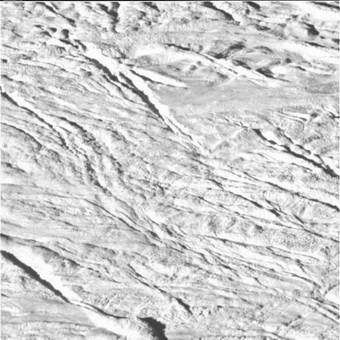The Cassini spacecraft has coasted to its closest encounter yet with Saturn's icy moon Enceladus -- but the pictures it took mystify NASA scientists.
Image: This is the first raw image returned from the Cassini spacecraft after its closest flyby yet. Here the surface of Enceladus is about 320 kilometers (199 miles) away. The spacecraft completed its flyby on July 14. Credit: NASA
The spacecraft skimmed about 110 miles above the moon July 14, returning pictures of a boulder-strewn landscape currently beyond explanation. The "boulders" appear to range between 30 and 60 feet in diameter.
"That's a surface texture I have never seen anywhere else in the solar system," said David Rothery, a planetary geologist at England's Open University.
John Spencer, a Cassini team member at the Southwest Research Institute in Colorado, agrees the images are puzzling.
"You would expect to see small craters or a smooth, snow-covered landscape at this resolution," he told New Scientist magazine. "This is just strange. In fact, I have a really hard time understanding what I'm seeing."
Regardless of the outcome of ongoing analyses and discussions, National Aeronautics and Space Administration officials have already scheduled another flyby of the moon in 2008, when Cassini will skim to within about 60 miles of the moon's boulder-strewn surface.
Copyright 2005 by United Press International
























